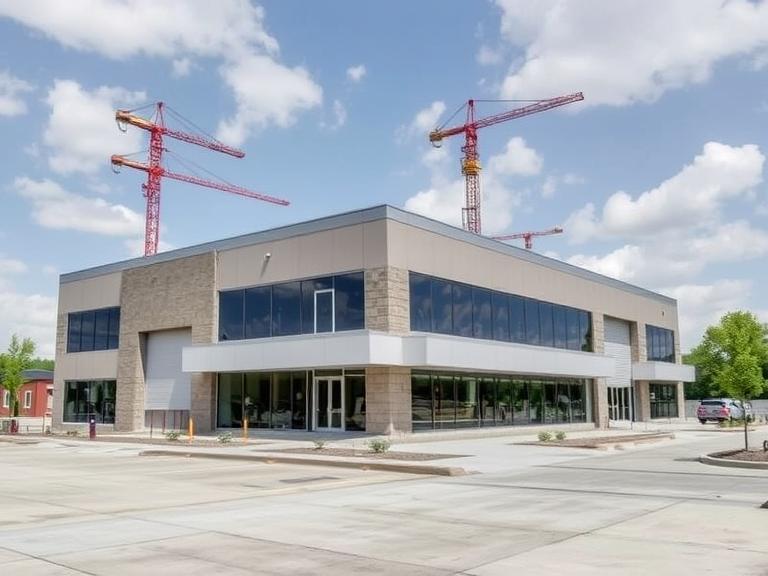Over the last decade, rapid technological advances have forever changed the construction industry landscape. A project that once relied on rolled-up blueprints and weeks of manual revisions can now be managed with digital modeling, real-time scheduling, and collaborative tools accessible from any device. These changes drive productivity, reduce costs, and greatly enhance transparency across all stakeholders—from engineers and architects to clients and contractors.
Innovative firms are leading this transformation by integrating tech solutions at every project phase, streamlining communication, and cutting down unforeseen delays. For instance, Orlando commercial construction illustrates how adopting innovative technologies—from project management apps to cloud-based document sharing—delivers projects faster and with fewer costly surprises. By embracing a digital-first mindset, these construction companies foster more collaborative relationships and set new benchmarks in speed and quality. Technology in this industry is no longer optional; it’s essential for maintaining competitiveness in a market where clients seek efficiency, accuracy, and sustainability.
BIM and Smart Project Visualization
Building Information Modeling (BIM) is revolutionary in the commercial construction sector. It brings plans and ideas to life by providing a detailed, multi-dimensional digital representation of a facility long before a shovel hits the ground. This modeling allows teams to visualize buildings and infrastructure and highlights structural challenges, design issues, and spatial conflicts that can be resolved before physical resources are committed. BIM encourages all team members—architects, engineers, contractors, and owners—to work off the same platform, fostering true collaboration and reducing the risk of miscommunication.
The benefits of BIM reach into every project stage. Early detection of design clashes and system overlaps can save tens of thousands of dollars and weeks by avoiding necessary rework and change orders. A recent ENR article recognized BIM as a leading factor in minimizing construction delays and improving overall build quality for commercial projects. BIM dramatically reduces material waste by empowering construction teams to solve problems virtually, enabling a more sustainable and responsible building approach.
Revolutionizing Project Management with Data
Managing a commercial construction project involves juggling timelines, budgets, contractors, permits, and changing priorities. With the help of advanced project management platforms, construction companies have evolved beyond static spreadsheets to dynamic, cloud-based solutions. These platforms allow teams to track real-time schedules, supply chains, and workforce allocations, seamlessly integrating with client communication and inspection workflows.
- Real-time updates promote accountability and transparency across each project phase.
- Customizable dashboards give managers, contractors, and clients a shared and accurate view of progress.
- Automated notifications reduce administrative work and prevent critical deadlines from slipping by unnoticed.
According to data from McKinsey & Company, construction projects utilizing comprehensive management platforms experience a 15% or greater increase in on-time and on-budget completions. Data-driven decision-making not only keeps complex endeavors organized but also empowers teams to spot risks and act quickly, which is crucial for the scale and speed demanded in today’s commercial marketplace.
Improving Safety and Efficiency On-Site
A safer job site means better project outcomes—and technology is a critical partner in that pursuit. Modern commercial construction companies now deploy drones for overhead site surveys and progress tracking, keeping workers away from dangerous heights and enabling more frequent, accurate inspections. Wearable tech, such as smart helmets and vests, track vital signs and environmental factors, alerting supervisors in real time if conditions become hazardous or if an individual is showing signs of fatigue or heat stress.
Automation also benefits efficiency. Repetitive, physically risky tasks—from material handling to heavy lifting—are increasingly performed by robotic equipment programmed for precision. This accelerates the pace of work and allows tradespeople to focus on quality-driven and creative tasks where their expertise shines. Enhanced safety means less downtime due to incidents, reduced insurance claims, and a workforce that feels valued and protected.
Prioritizing Sustainability in Commercial Buildings
Sustainability is no longer an afterthought in modern construction—it’s a central value shaping materials, methods, and project goals. From the initial design phase, eco-friendly principles take priority—maximizing daylight, incorporating recycled content, or implementing energy-efficient mechanical systems. Green roofs, water-saving fixtures, and building energy models are standard discussion points on many commercial projects.
The commitment to green building is supported by a growing demand from commercial tenants, regulatory agencies, and the broader community for structures that reduce environmental impact. According to the U.S. Green Building Council, more than half of all new commercial starts now target green certification, reflecting ecological ethics and economic payoffs from lower operating costs and higher occupancy rates. Intelligent automation, advanced HVAC, and resource monitoring systems are not just strategic choices—they’re increasingly market expectations.
Bridging the Labor and Skills Gap
While construction projects steadily increase in complexity, the industry faces a persistent shortage of skilled labor. To bridge, commercial firms are leveraging technology like never before. Automation to bridge this gap, prefabrication, and innovative software reduce the burden on skilled trades, allowing smaller teams to complete larger and more intricate projects efficiently. Thisift makes the profession appealing to younger generations interested in technology, widening the talent pool.
Virtual reality (VR) and augmented reality (AR) in training are another game-changer, offering safe, realistic, and cost-effective environments for learning new trades and refining skills. These immersive tools quickly prepare workers for the modern job site, where familiarity with traditional tools and digital platforms is equally important. Rapid upskilling helps address immediate labor shortages while enhancing safety and overall project quality.
What the Future Holds for Commercial Construction
The following commercial construction chapter will be defined by deeper digital integration, data-driven insight, and growing environmental awareness. Artificial intelligence is being tested to forecast delays and cost overruns, optimize supply chains, and drive quality standards, taking risk management to a new level. Smart buildings with sensors, IoT networks, and automation now promise continuous optimization of energy use and occupant comfort, creating long-term value for owners.
Investments in these innovations are rapidly rising. According to Construction Dive, over 70% of construction companies are actively investing in new technology, outpacing past years and signaling an industry-wide commitment to more innovative, safer, and more efficient ways of building. As cities grow and global priorities evolve, the commercial construction company of tomorrow will need to be part tech firm, part sustainability leader, and always ready to adapt.
Final Thoughts
Today’s commercial construction sector stands at the crossroads of tradition and innovation. For companies in the field, success lies in combining deep, hands-on experience with the willingness to embrace new technologies that make projects smarter, safer, and more sustainable. As clients and communities continue to raise their expectations for what buildings can offer, construction firms that invest in digital tools, sustainability, and workforce development will define the industry’s future. The possibilities are vast—the real challenge is staying curious, adaptive, and ready to build the future, one innovative project at a time.




